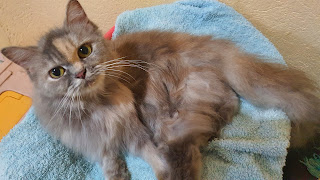1. Dogs Can Smell Diseases: Dogs have an incredible sense of smell, and some can be trained to detect diseases like cancer, diabetes, and even COVID-19. They can sense changes in a person's scent when they are sick.
2. Dogs Understand Human Emotions: Studies have shown that dogs can read human emotions. They can tell when you're happy, sad, or anxious, and they often respond accordingly.
3. Dogs Dream Like Humans: Research suggests that dogs have similar sleep patterns and brain activity as humans, and they likely experience dreams. You might notice your dog twitching or moving while asleep, which could be a sign of dreaming.
4. The Basenji Dog Doesn't Bark: The Basenji breed, often called the "barkless dog," doesn't bark like other dogs. Instead, they make unique yodel-like sounds called "baroos."
5. Dogs Have an Incredible Sense of Hearing: Dogs can hear sounds at frequencies as high as 65,000 Hz, while humans can only hear up to 20,000 Hz. This heightened sense of hearing helps them detect high-pitched sounds and even earthquakes before humans can.
6. The Norwegian Lundehund Has Extra Toes: The Lundehund is a unique Norwegian breed known for having six toes on each foot, which helps them climb steep cliffs in search of birds' eggs.
7. Dogs Have a Unique Nose Print: Just like human fingerprints, each dog's nose print is unique. The patterns of ridges and creases on their noses can be used for identification.
8. Greyhounds Are One of the Fastest Dogs: Greyhounds are one of the fastest dog breeds, capable of reaching speeds up to 45 miles per hour. Despite their speed, they are often referred to as "couch potatoes" due to their calm and gentle nature.
9. The World's Smallest Dog: The smallest dog on record is a Chihuahua named Miracle Milly, who stood at just 3.8 inches tall and weighed less than a pound.
10. Dogs Can Detect Changes in the Earth's Magnetic Field: Some researchers believe that dogs have a sense that allows them to detect changes in the Earth's magnetic field. This ability might help them with navigation and understanding their environment.
These surprising facts demonstrate the incredible range of abilities and characteristics that make dogs such remarkable and beloved companions.




























.jpg)















.jpg)
.jpg)







